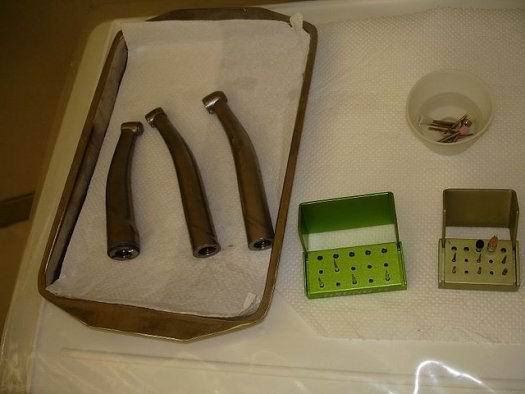牙疼不是病,疼起来真要命。说起牙病的痛苦和牙钻的恐怖,很多人都深有体会。据美国《大众科学》网站报道,英国科学家发明了一种牙膏,长期使用可有“补牙”的功效,有望使牙钻成为历史。

当细菌溶解了牙齿表面的珐琅质后,蛀牙就很容易产生。传统的治疗方式是,当龋洞大到一定程度,牙医用钻头去掉已经被腐蚀的部分,然后填上树脂、金属或者其它材料。英国利兹大学口腔学院的科研人员则发明了新的疗法,可以逆转牙齿被腐蚀的过程,使得牙齿自行再生。
这项新发明就是一种氨基酸牙膏,它内含一种复合纤维材料。当作用于龋齿时,这种牙膏会形成胶粘性支架,吸引钙质沉淀,使龋齿自行弥合。
科学家已经进入人体试验阶段。据称这种牙膏针对牙齿蛀斑是有效的。单纯依靠牙膏就能“吃嘛嘛儿香,身体倍儿棒”的时代有望到来。
生物探索推荐英文文章阅读:
Painless Protein Scaffold Lets Cavity-Ridden Teeth Re-Grow From the Inside Out
A new tooth-regenerating paste could reverse bacterial-induced tooth decay, sweeping dental drills into the dustbin of history. Hopefully.
As your hygienist probably told you, tooth decay happens when bacteria in plaque dissolve your enamel, creating cavities. Eventually the cavity gets big enough that your dentist has to take out the decay and drill a hole that can be filled with resin, gold or something else. But a new treatment developed at the University of Leeds in the UK reverses the decay, allowing your teeth to rebuild themselves.
Researchers led by Jennifer Kirkham at the Leeds Dental Institute developed an amino acid toothpaste that contains a compound that assembles into fibers. When it’s applied to a decayed tooth, this peptide paste forms a gelatinous scaffold that attracts calcium, enabling the tooth to rebuild itself from within. Tissue and bone scaffolds are used to seed new organs and new bones — why not teeth?
This procedure also avoids the use of stem cells, which also hold great promise for regenerating teeth. One such treatment also uses a scaffold, but instead of inducing calcium building blocks, itseeds the scaffold with stem cells. Just last month, we heard about a different project to re-grow mice molars in vitro and transplant them back into the mice. But a stem-cell-free toothpaste that grows new teeth in situ would conceivably be less painful, not to mention less controversial.
The team has already tested this in humans, according to a Leeds news release. A small group of patients with the early signs of tooth decay received a treatment with the peptide solution, known as P 11-4, and results suggest the damage was reversed, the release says.
A dentist would still have to clean out the decay, so it’s not clear that the dental drill will be entirely eliminated with this new toothpaste. But it’s a step toward making dental visits a lot more pleasant.







